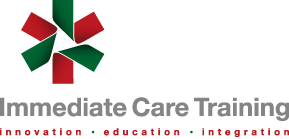
Guidelines
Pharmacologically Assisted Laryngeal Mask insertion.
Management of the pre-hospital airway can be challenging. A range of techniques and adjuncts are available to the pre-hospital clinician to aid in their efforts to maximise oxygenation and support ventilation. When measures fail, management is escalated through a series of increasingly complex and invasive procedures (“the airway management ladder”) with the aim of establishing a definitive airway secured with an endo-tracheal tube or other surgical airway. In the non-arrested patient the gold standard for definitive pre-hospital airway management is pre-hospital rapid sequence induction and tracheal intubation (RSI) delivered by a competent clinical team.
There may, however, be circumstances in which a pre-hospital RSI cannot be delivered, whether due to lack of clinical capability or lack of access to the patient. Some of these patients may benefit from advanced airway management, with the aim of promoting oxygenation, through the technique of PALM - Pharmacologically Assisted Laryngeal Mask insertion. This technique involves sedating the trauma patient and inserting a supraglottic airway device (SAD) with the aim of improving their oxygenation and providing a degree of protection from ongoing airway contamination.
This article below reports the conclusions of a consensus meeting held in April 2012. The meeting followed a full literature search which was presented to the meeting, to which there was an open invitation to all relevant stakeholders. The meeting examined the PALM technique and its indications and outlined the competencies required of practitioners performing the procedure. Representatives from across the pre-hospital community and emergency care who contributed to the meeting are listed in table 1. A draft document was produced reflecting the conclusions from the meeting; this document was then reviewed by the attendees prior to a final review by the key colleges, faculties and other organisations within pre-hospital care.